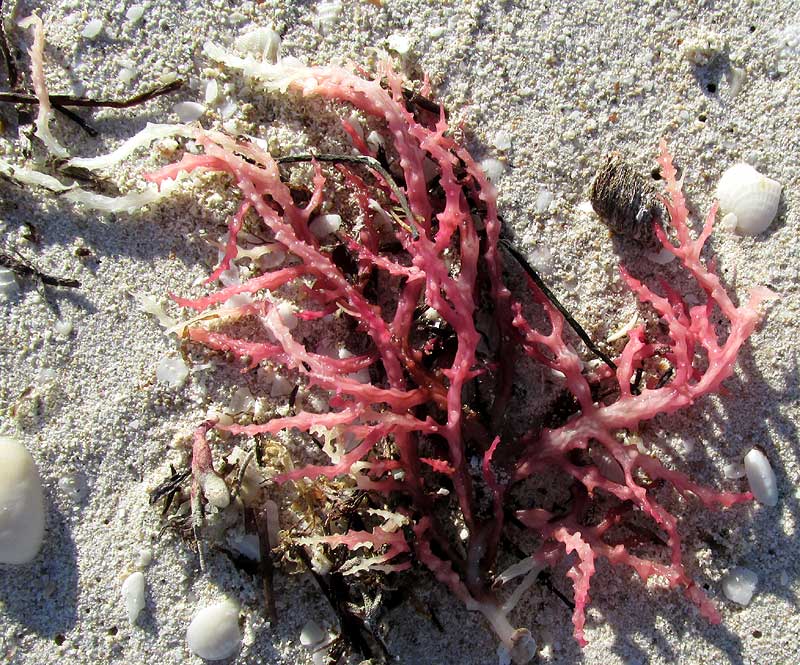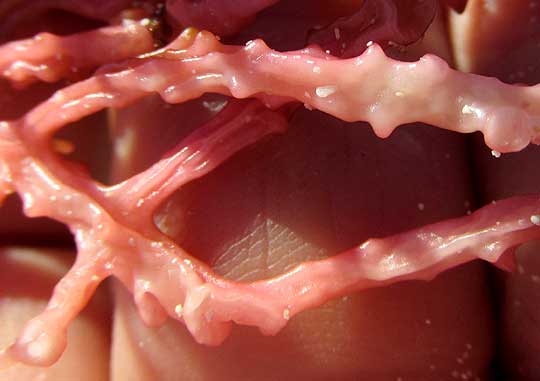Excerpts from Jim Conrad's
Naturalist Newsletter

from the January 4, 2015 Newsletter issued from Río Lagartos, on the Yucatan Peninsula's northern coast (~N21.60°, ~W88.16°), Yucatán state, MÉXICO
PRICKLY SEAWEED
*UPDATE: In 2015 when these pictures were made, I couldn't identify this item washed up on a sandy beach on the Gulf of Mexico side of the narrow finger of lying across the estuary from Río Lagartos. A close-up of the thing's bumps and curiously sinewy stem -- with lines on my fingers providing scale for the stems' size -- appears below:

In 2024, with many more identification resources on the Internet, when I upload the images to iNaturalist, the AI automatic identification feature offers several suggestions, among which one is what our organism appears to be: Prickly Seaweed, ACANTHOPHORA SPICIFERA.
It's red alga of the family Rhodomelaceae. Its native distribution is unclear, some thinking it's originally from the Caribbean/Gulf of Mexico area south to Brazil, and others regarding at as pantropical -- native throughout the planet's tropical waters.
In certain parts of the world it behaves as an aggressive weed. The 2012 work by E. Ávila and others entitled "Epibiotic traits of the invasive red seaweed Acanthophora spicifera in La Paz Bay, South Baja California (Eastern Pacific)," says that it "... forms dense beds colonising almost all types of hard substrata from the intertidal to 5-6 m depth, such as rocks, mussels, sponges and coral rubble."